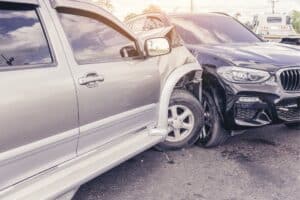Seattle, known for its stunning views and coffee culture, is equally notorious for its unpredictable weather patterns. The city’s unique weather conditions can have a significant impact on driving behavior, making it essential for drivers to adapt to the various seasonal changes. This article will explore how seasonal weather affects driving behavior in Seattle and provide some tips to help residents and visitors stay safe on the road.
The Impact of Rain on Driving Behavior
Seattle’s rainy season typically lasts from October to April, with November being the wettest month. During these months, drivers must contend with reduced visibility, slick roads, and hydroplaning risks. As a result, they should:
- Slow down to prevent skidding and maintain a safe following distance.
- Turn on their headlights to improve visibility for themselves and other drivers.
- Avoid puddles and standing water to minimize the risk of hydroplaning.
How Drivers Adapt to the Rain
Seattle drivers are generally well-acquainted with driving in the rain, which may make them more cautious and vigilant during wet conditions. They may also be more likely to invest in rain-specific tires with better traction and maintain their vehicles with regular windshield wiper replacements and brake checks.
The Impact of Winter Weather on Driving Behavior
Although snow is relatively rare in Seattle, when it does occur, it can create hazardous driving conditions. Snow and ice can cause slippery roads, reduced visibility, and increased stopping distances. To stay safe, drivers should:
- Slow down and allow extra space for braking.
- Use their headlights and fog lights as needed.
- Keep their vehicle well-maintained, including ensuring that their tires have adequate tread.
Preparing for Winter Driving
Seattle drivers may not be as experienced with driving in snow and ice as those in colder climates. However, they can prepare for winter driving by:
- Familiarizing themselves with their vehicle’s winter driving features, such as anti-lock brakes and traction control.
- Carrying essential supplies, such as a snow brush, ice scraper, and emergency kit.
- Checking weather forecasts and road conditions before venturing out in winter conditions.
The Impact of Spring and Summer Weather on Driving Behavior
During the sunnier months, Seattle drivers may experience sun glare, which can make it difficult to see the road and other vehicles. To reduce glare-related accidents, drivers should:
- Wear polarized sunglasses to minimize glare.
- Use their vehicle’s sun visor to block the sun.
- Keep their windshield clean to reduce glare caused by dust and dirt.
Increased Roadway Activity
Warmer weather typically brings increased roadway activity, including more pedestrians, cyclists, and motorcyclists. Drivers should:
- Remain alert and cautious, especially in areas with high foot traffic.
- Yield to pedestrians at crosswalks and give cyclists plenty of space on the road.
- Always signal their intentions, such as lane changes and turns, to alert other road users.
Adapting to Seattle’s Microclimates
Seattle’s diverse microclimates can create a range of weather conditions within a relatively small area. Drivers should be prepared to encounter rapidly changing weather by:
- Monitoring local weather forecasts and adjusting their driving plans accordingly.
- Staying alert to changing driving conditions, such as sudden fog or rain.
- Adapting their driving behavior to the current conditions, even if it means slowing down or pulling over.
Tips for Safe Driving in Seattle’s Seasonal Weather
To minimize the risks associated with Seattle’s seasonal weather, drivers should follow these general safety tips:
- Regularly maintain their vehicles, including checking tire pressure, brakes, and fluid levels.
- Keep an eye on the weather forecast and plan their trips accordingly.
- Stay informed about local traffic conditions and potential road hazards.
- Keep a safe following distance and adjust their speed to match the road conditions.
Emergency Preparedness
Drivers should also be prepared for unexpected weather-related emergencies by:
- Carrying an emergency kit in their vehicle, including a flashlight, blankets, first aid supplies, non-perishable food, and water.
- Having a fully charged cell phone and a car charger on hand.
- Knowing how to change a tire and having the necessary tools in their vehicle.
Minimize Risks
Understanding how seasonal weather can affect driving behavior in Seattle is crucial for both residents and visitors. By staying informed, maintaining their vehicles, and adapting their driving habits, drivers can minimize the risks associated with Seattle’s unpredictable weather conditions and contribute to safer roads for all.
If you have experienced an auto accident in the Seattle area, call the personal injury experts at NBF Accident Law. We pride ourselves on being available and communicative and representing our clients with courage and integrity. Call today at (206) 923-8888.
Except: Seattle is known for its weather. Here’s how its drivers adapt:





